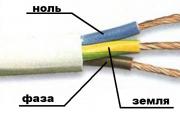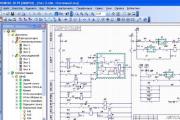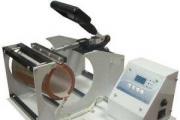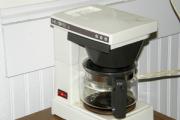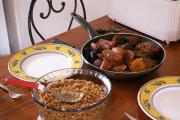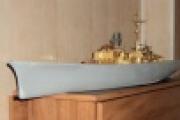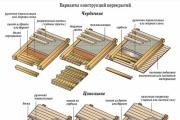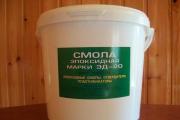Digital frequency meter. "Electronics and Radio Engineering" to the home master! Homemade circuit frequency counters
This article is intended for those who do not want to "bother" with MK.
Each radio amateur in the course of his creative activity is faced with the need to equip his "laboratory" with the necessary measuring instruments.
One of the devices is a frequency counter. Whoever has the opportunity, he buys ready-made, and someone assembles his design, according to his capabilities.
Now there are many different designs made on MK, but they are also found on digital microcircuits (as they say, "Google to the rescue!").
After the "revision" in their bins, it turned out that there are digital microcircuits of the 155, 555, 1533, 176, 561, 514ID1 (2) series (simple logic - LA, LE, LN, TM, medium complexity - IE, IR, ID , another 80-90 years of production, throw them away - the “toad” crushed!) On which you can assemble a simple device, from those components that were at hand at the moment.
I just wanted creativity, so I started developing a frequency meter.
Picture 1.
Appearance of the frequency counter.
Frequency Counter Block Diagram:

Figure 2.
Block diagram of the frequency counter.
Input device-shaper.
I took the circuit from the Radio magazine of the 80s (I don’t remember exactly, but it seems like Biryukov’s frequency meter). Previously repeated it, the work was satisfied. The shaper used K155LA8 (works confidently at frequencies up to 15-20 MHz). When using microcircuits of the 1533 series (counters, input shaper) in the frequency meter, the operating frequency of the frequency meter is 30-40 MHz.

Figure 3
Input shaper and CG of measuring intervals.
Master oscillator, measuring interval shaper.
The master oscillator is assembled on a K176 clock MS, shown in Figure 3 together with the input driver.
The inclusion of MS K176IE12 is typical, there are no differences. Frequencies 32.768 kHz, 128 Hz, 1.024 kHz, 1 Hz are formed. Used in emergencies only 1 Hz. To form a control signal for the VU, this frequency is divided by 2 (0.5 Hz) MS K561TM2 (CD4013A) (one D-trigger is used).

Figure 4
interval signals.
Signal generator for resetting counters KR1533IE2 and writing to storage registers K555IR16
Assembled on MS K555 (155) AG3 (two standby multivibrators in one case), two MS K155AG1 can also be used (see Fig. No. 3).
On the decline of the control signal MS AG3, the first w / m generates a Rom pulse - writing to the storage registers. According to the decay of the Rom pulse, the second f / m reset pulse of the triggers of the counters KR1533IE2 Reset is formed.

Figure 5
Reset signal.
To measure the frequency, a block was assembled on 2 K555IR16 and 4 K555 (155) LE1 (I found a schematic diagram on the Internet, I only slightly corrected the existing elementary base for myself).
You can simplify the frequency meter and not assemble the circuit for blanking out insignificant zeros (Figure No. 9 shows a frequency meter circuit without a circuit for blanking out insignificant zeros), in this case all indicators will simply light up, see for yourself how you feel better.
I collected it because it's just more pleasant for me to look at the frequency meter board.

Figure 6 Scheme for canceling insignificant zeros.
The inclusion of counters KR1533IE2, registers K555IR16, decoders KR514ID2 is typical, according to the documentation.

Figure 7
Scheme of switching on counters and decoders.
The entire emergency is assembled on 5 boards:
1, 2 - counters, registers and decoders (4 decades on each board);
3 - block blanking insignificant zeros;
4 - master oscillator, measuring interval shaper, Rom and Reset signal shaper;
5 - power supply.
Board sizes: 1 and 2 - 70x105, 3 and 4 - 43x100; 5 - 50x110.

Figure 8
Connecting the circuit for suppressing insignificant zeros in the frequency meter.
Power unit. Assembled on two MS 7805. The inclusions are typical, as recommended by the manufacturer. To make a decision on the power supply, measurements of the current consumption of emergency situations were carried out, and the possibility of using a UPS and a PSU with PWM stabilization was also checked. Checked: UPS assembled on TNY266PN (5V, 2A), PSU with PWM based on LM2576T-ADJ (5V, 1.5A). General remarks - ES does not work correctly, because. pulses pass through the power circuit with the frequency of the drivers (for TNY266PN about 130 kHz, for LM2576T-ADJ - 50 kHz). The use of filters did not reveal much change. So, I stopped at an ordinary PSU - a trans, a diode bridge, electrolytes and two MS 7805. The current consumption of the entire emergency (on the indicators all "8") is about 0.8A, when the indicators are off - 0.4A.

Figure 9
Frequency meter circuit without trailing zero suppression circuit.
In the power supply, I used two MS 7805 to power the emergency. One MC of the stabilizer feeds the board of the input shaper, the decoder control unit (quenching of insignificant zeros) and one board of counter-decoders. The second MS 7805 - feeds another board of counter-decoders and indicators. It is possible to assemble a power supply unit on one 7805, but it will be decently warm, there will be a problem with heat dissipation. In emergencies, MS series 155, 555, 1533 can be used. It all depends on the capabilities ....




Figure 10, 11, 12, 13.
The structure of the frequency counter.
Possible replacement: K176IE12 (MM5368) with K176IE18, K176IE5 (CD4033E); KR1533IE2 on K155IE2 (SN7490AN, SN7490AJ), K555IE2 (SN74LS90); K555IR16 (74LS295N) can be replaced with K155IR1 (SN7495N, SN7495J) (they differ in one output), or K555 (155) TM5 (7) (SN74LS77, SN74LS75) can be used to store information; KR514ID2 (MSD101) decoder for indicators with OA, you can also use KR514ID1 (MSD047) decoder for indicators with OK; K155LA8 (SN7403PC) 4 elements 2I-NOT with an open collector - on K555LA8; K555AG3 (SN74LS123) on K155AG3 (SN74123N, SN74123J), or two K155AG1 (SN74121); K561TM2 (CD4013A) to K176TM2 (CD4013E). K555LE1 (SN74LS02).
P.S. You can use various indicators with OA, only the current consumption per segment should not exceed the output load capacity of the decoder. Limiting resistors depend on the type of indicator used (in my case, 270 ohms).
Below in the archive there are all the necessary files and materials for assembling the frequency meter.
Good luck to everyone and all the best!
The reason for repeating this frequency meter and attachment for determining the parameters of unknown circuits was the design of the R-45 receiver. In the future, this "mini complex" will facilitate the winding and tuning of RF circuits, control of the reference points of generators, and so on. So, the frequency meter presented in this article allows you to measure the frequency from 10 Hz to 60 MHz with an accuracy of 10 Hz. This allows you to use this device for a wide range of applications, such as measuring the frequency of a master oscillator, a radio receiver and transmitter, a function generator, a quartz resonator. The frequency meter provides good parameters and has good input sensitivity, thanks to the presence of an amplifier and a TTL converter. This allows you to measure the frequency of quartz resonators. If you use an optional frequency divider, the maximum measurement frequency can reach 1 GHz or more.
The frequency meter circuit is quite simple, most of the functions are performed by the microcontroller. The only thing is that the microcontroller needs an amplifying stage to increase the input voltage from 200-300 mV to 3 V. The transistor, connected according to the common emitter circuit, provides a pseudo-TTL signal to the input of the microcontroller. As a transistor, some kind of "fast" transistor is needed, I used BFR91 - a domestic analogue of KT3198V.

The voltage Vke is set at the level of 1.8-2.2 volts by the resistor R3 * in the circuit. I have it 22 kOhm, however, an adjustment may be required. The voltage from the collector of the transistor is applied to the counter/timer input of the PIC microcontroller, through a series resistance of 470 ohms. To turn off the measurement, the built-in pull-down resistors are used in the PIC. The PIC implements a 32-bit counter, partly in hardware, partly in software. The counting begins after the microcontroller's built-in pull-down resistors turn off, the duration is exactly 0.4 seconds. After this time, PIC divides the received number by 4, and then adds or subtracts the corresponding intermediate frequency to get the real frequency. The received frequency is converted for display on the display.
In order for the frequency counter to work correctly, it needs to be calibrated. The easiest way to do this is to connect a pulse source with a precisely known frequency in advance and set the necessary readings by rotating the trimmer capacitor. If this method is not suitable, then you can use the "rough calibration". To do this, turn off the power to the device, and connect the 10th leg of the microcontroller to GND. Then, turn on the power. The MK will measure and display the internal frequency.
If you cannot adjust the displayed frequency (by adjusting the 33 pF capacitor), then momentarily connect pin 12 or 13 MK to GND. It is possible that this will need to be done several times, since the program only checks these outputs once per measurement (0.4 sec). After calibration, disconnect the 10th pin of the microcontroller from GND, without turning off the power to the device, in order to save the data in the non-volatile memory of the MK.
I drew a printed circuit board for my case. Here's what happened, when power is applied, the splash screen pops up for a short time and the frequency meter goes into measurement mode, there is nothing at the input:

Scheme of prefix contour

The author of the article finalized the scheme relative to the original source, therefore I do not attach the original, the board and the firmware file are in the general archive. Now let's take a circuit unknown to us - a prefix for measuring the resonant frequency of the circuit.

We insert it into a not yet quite convenient socket, it will do to check the device, we look at the measurement result:

The frequency meter was calibrated and tested on a 4 MHz crystal oscillator, the result was recorded as follows: 4.00052 MHz. In the case of the frequency meter, I decided to bring power to the +9 Volt prefix, for this a simple stabilizer +5 V, +9 V was made, its board is in the photo:

I forgot to add, the frequency meter board is slightly rearward to the top - for the convenience of removing the pic of the microcontroller, rotating the trimmer capacitor, the minimum length of the tracks on the LCD.

Now the counter looks like this:



The only thing is that I didn’t fix the error in the MHz inscription yet, but everything is 100% working. Circuit assembly and testing - GOVERNOR.
Discuss the article HOW TO MAKE A FREQUENCY METER
Most designs of digital frequency meters described in the literature contain many scarce components, and an expensive quartz resonator is used as a stable frequency source in such devices. As a result, the frequency counter is complex and expensive.
We offer readers a description of a simple frequency meter with a digital readout, the source of a stable (reference) frequency in which is an alternating current network of 50 Hz. The device will find application in various measurements in amateur radio practice, for example, as calibrated scales in audio frequency generators that increase their reliability, or instead of bulky capacitor frequency meters. With LED or magnetic sensors, this device can be used to control the number of revolutions of electric motors, etc.
MAIN SPECIFICATIONS
DIGITAL FREQUENCY METER:
measured frequency range, Hz…….. 10-999.9Х10 3
effective value of the input voltage, V…….0.02-5
measurement time, s …. 0.01; 0.1; 1
power consumption, W …. 3
measurement error, counting……..±4X10 -3 ±1.
The total relative frequency measurement error is determined by the relation:
b1=±bet± 1/N,
where bet is the frequency error of the reference frequency;
1/N - discretization error (does not depend on the measured frequency and is equal to ±1 count of the least significant digit).
It can be seen from the above formula that the measurement error is directly dependent on the stability of the mains frequency of 50 Hz. According to GOST, the instability of the network frequency of 50 Hz is ± 0.2 Hz in 10 minutes. Therefore, the relative error of the frequency meter can be considered equal to ±4X10 -3 ±1 count. In practical measurements, the relative error of the frequency meter was ±2X X10 -3 ±1 count.
The operation of the frequency meter is based on counting the number of periods of the measured signal for reference (0.01; 0.1; 1 s) time intervals. The measurement results are displayed on a digital display and are automatically repeated at regular intervals.
The frequency meter (Fig. 1) includes: an input signal conditioning amplifier, a time selector, a decade counter, a digital indicator, a network generator, a reference time interval generator, a control and reset device, and a power supply.
In the shaping amplifier, the signal of the measured frequency fx is amplified and converted into rectangular pulses of the same frequency, which are fed to one of the inputs of the time selector. Rectangular pulses of reference time intervals are fed to its other input from the control and reset device. In the network shaper, rectangular pulses with a frequency of 100 Hz are generated.
The measurement time during which the selector is open is selected with the SA switch. At the moment of arrival of the reference pulse, the time selector opens and a burst of rectangular pulses of the measured frequency fx appears at its output. The duration of the burst corresponds to the duration of the reference pulse, “selected by the switch SA. Next, the pulses in the pack are counted and displayed on a digital display.
After the indication time has elapsed, the reset pulse (from the control and reset device) acts on the time selector and the ten-day counter-board is cleared, and the selector is prepared for a new measurement cycle.
Schematic diagram of the frequency meter - in Figure 2. The input signal of the measured frequency is amplified by a resistive amplifier on the transistor VT1 and finally formed by the elements DD4.1, DD4.2 into a sequence of rectangular pulses of the measured frequency. The input circuit VT1 is protected by current (R3) and voltage (VD1). From pin 6 DD4.2, rectangular pulses of the input signal are fed to one of the inputs (pin 9 DD4.3) of the time seector. The second input (pin 10 DD4.3) serves rectangular pulses of reference time intervals. At the end of the action of the reference pulse, the time selector is blocked, the input pulses do not pass to the counter.
The input pulses are counted by a four-digit counter on the DD6-DD9 microcircuits, and the HG1-HG4 indicators show the frequency of the input signal in digital form.
On the diodes VD10-VD13, a mains voltage rectifier is made. The pulsating (with a frequency of 100 Hz) voltage is converted by a Schmitt trigger (DD1.1, DD1.2) into rectangular pulses with a frequency of 100 Hz, which are then fed to a two-stage decade divider DD2, DD3. Thus, at the outputs of the microcircuits DD1.2 (pin 11), DD2 (pin 5), DD3 (pin 5) receive pulses of reference time intervals of 0.01, 0.1 and 1 s. The measurement time is set by switch SA2.
The control and reset device consists of D-flip-flops DD5.1 and DD5.2 and transistors VT2 and VT3. The counting of the frequency of the input signal begins when the leading edge of the reference pulse comes from the switch SA2.1 to the input D of the trigger DD5.1, which switches to a "single" state.

Rice. 1. Block diagram of the frequency counter:
1 - input signal conditioning amplifier, 2 - time selector, 3 - decade counter, 4 - digital indicator, 5 - network generator, 6 - reference time intervals generator, 7 - control and reset device, 8 - power supply.
At pin 10 DD4.3 time selector trigger DD5.1 (pin 5) receives a logic 1 signal and allows the passage of rectangular pulses of the input frequency to the input counter DD6 (pin 4). After the selected reference time interval (0.01, 0.1, 1 s) has elapsed, a reference pulse is again supplied to the input D of the trigger DD5.1, the trigger returns to its original state, blocking the time selector and switching the trigger DD5.2 to the "single" state . The process of indicating the frequency of the input signal on the digital display begins.
A logic 1 signal appears at pin 9 of DD5.2, and the process of charging capacitor C5 begins through resistor R11. As soon as the voltage at the base of the transistor VT2 reaches a voltage of approximately 1.2 V, the transistor will open and a short negative pulse will appear on its collector, which, through the MS DD1.3, DD1.4, will switch the trigger DD5.2 to its original state. Capacitor C5 through the VD2 diode and the DD5.2 chip will quickly discharge to almost zero.

Rice. 2. Schematic diagram of the device:
DD1, DD4 K155LAZ;DD3 K155IE1;DD5 K.155TM2;DD6- DD9 K176IE4;VD6- VD9 D226A,VD10- VD13 D9B,HG1- HG4 IV FOR.

Rice. 3. Appearance of the frequency meter.

Ris. 5. Layout of elements in the frequency meter case:
1 - network indicator, 2 - power on toggle switch, 3 - power transformer, 4 - fuse holder, 5 - printed circuit board, 6 - light filter, 7 - time interval switch.
The negative reset pulse on the VT2 collector is inverted by the VT3 transistor, acting on the R inputs of the DD6-DD9 microcircuits and resetting the readings - the indication of the measurement results stops. Upon arrival of the front of the next reference pulse, the process is repeated.
The frequency meter uses resistors MLT-0.25, capacitors K50-6 and KLS. The transistors KT315 and KT361 indicated in the circuit (with any letter index) are replaced by any silicon high-frequency transistors of the corresponding structure. Instead of KD522B diodes, you can use any of the KD521, KD520 series. Diode GD511B can be replaced with D9.
Microcircuits of the K155 series can be replaced with similar ones of the K133 series. Indicators IV-ZA are replaced by IV-3. The power supply transformer has a power of 5-7 watts. Winding voltage: II - 0.85 V (current 200 mA), III - 10 V (current 200 mA), IV - 10 V (current 15 mA). Diode bridges VD6-VD9 and VD10-VD13 can be powered from one 10 V winding (current not less than 220 mA). The VT4 transistor has a 20X30X1 mm radiator, made of two aluminum plates, which are attached to the transistor on both sides with an M3 screw and a nut.


Rice. 4. Printed circuit board with the layout of the elements.
The frequency meter is manufactured to replace the calibrated scale in the low frequency generator (LFG). The digitized drum has been removed from the generator. Digital indicators are placed in the scoreboard window covered with transparent plexiglass with a green light filter (Fig. 3).
The frequency meter can also be used for its intended purpose. To do this, introduced the switch SA1, located on the front panel of the generator.
The printed circuit board of the frequency meter is made of foil-coated getinax 1.5–2 mm thick (Fig. 4). The connection of indicators HG1-HG4 with integrated circuits DD6-DD9 is made from the printed conductors.
All connections should preferably be made with a single-core insulated wire (for example, 0 0.3 mm from a telephone cable). AC circuits - stranded wire 0 0.7-1.5 mm.

Rice. 6. Body design: bottom (1) and top (2) U-shaped panels. Holes for controls are drilled locally.
It is necessary to pay attention to the correct installation of digital indicators HG1 - HG4. They should be placed in the same plane and at the same level and spaced from the leading edge of the printed circuit board at a distance of 2-3 mm. Resistor R18 and LED VD6 are located on the front panel of the device. A variant of the arrangement of nodes in the frequency meter (without LFO) is shown in Figure 5.

Rice. 7. Connection diagram of the switch for measuring the period of signals.
The body of the device with the indication of the required dimensions is shown in Figure 6. It is made of D16AM duralumin 1.5 mm thick. The upper and lower U-shaped halves of the body are connected with the help of duralumin corners 12X 12 mm, riveted to the lower half of the body, in which holes are drilled and MZ threads are cut.
The printed circuit board is attached to the bottom of the frequency meter using M3 screws and plastic bushings 10 mm high.
For microcircuits DD2 and DD3, before installing on the printed circuit board, the third and twelfth legs must be shortened to a thickening.
The adjustment of the device begins with a check of the installation, then the voltages of the power supply are measured, which must correspond to those indicated on the circuit diagram.
Zeros will appear on the digital display. This indicates the performance of the frequency counter. SA2 is switched to the extreme right (according to the scheme) position, and rectangular pulses with a frequency of 100 Hz are fed to the input of the frequency meter (using a jumper) from terminal 11 DD1.2. The display shows the number 0.100. In the case of another combination of numbers, by selecting R2, the correct operation of the network shaper is achieved.
The final adjustment of the manufactured frequency meter is carried out using a generator, an oscilloscope and an industrial frequency meter, for example G4-18A, S1-65 (H-313), 43-30.
A signal with a frequency of 1 MHz and a voltage of 0.02 V is fed to the input of the frequency meter (R3). By selecting the resistor R5, the maximum gain of the transistor VT1 is achieved. By changing the frequency and amplitude of the input signal, the operation of the frequency meter is controlled in accordance with the technical specifications, comparing the readings with factory-made instruments.
If it is necessary to measure low frequencies with high accuracy, the counting time should be increased. To do this, the generator of reference time intervals must be supplemented with another decade divider (turning it on in the same way as DD2 and DD3), increasing the counting time to 10 s.
You can also measure not the frequency of the input signal, but its period. For. To do this, an additional switch should be introduced into the frequency meter, the circuit of which is shown in Figure 7.
V. SOLUTIONS,
Taganrog, Rostov region
"Modelist-Designer" 10 1990
OCRpirate
A diagram of a simple pointer frequency meter is shown in the figure. The frequency meter is based on a Schmitt trigger and a pulse shaper. The Schmitt trigger, being a potential relay, converts signals of a sinusoidal or other form into rectangular pulses. These pulses cannot be used for measurement as their duration depends on the amplitude of the input signal. They are used to start the pulse shaper on the elements DD1.3, DD1.4, which, together with R3 and one of the capacitors C2-C4, form a delay line with a fixed duration and amplitude. The output pulses are fed to the device, the deviation of the arrow due to the inertia of the moving system is proportional to the average current flowing through its frame.
Scheme of a pointer frequency meter 20Hz-20kHz
VD1 VD2 limit the output voltage. the duration of the output pulse of the shaper is determined by the time constant of the R3,C2-C4 chain and should be approximately 5-10 times less than the period of the highest measured frequency. At the indicated ratings in the circuit, the highest measurable frequency is 20 kHz. Trimmer resistors R5-R7 are used when calibrating the frequency meter for the full deviation of the indicator needle. The frequency meter can be calibrated using a reference oscillator or frequency meter. The frequency meter scale in the entire range is almost all uniform, so you only need to determine the initial and final limits of the scale.
Source - Partin A.I. Popular About Digital ICs (1989)
- Similar articles
Login with:
Random articles
- 22.09.2014
The circuit diagram of the device is shown in Fig. 1, the device is designed to control a collector electric motor - a drill, a fan, and so on. On the unijunction transistor VT1, a generator of short positive pulses is assembled to control the auxiliary trinistor VS1. The generator is powered by a trapezoidal voltage obtained by limiting the positive half-waves of a sinusoidal voltage (100 Hz) by the zener diode VD1. With the advent of each half-wave of such ...
- 02.10.2014
This power supply is designed to power various devices from a voltage of 25-30V at a current of 70mA from the vehicle's on-board network. A transistor multivibrator with a powerful output generates pulses with a frequency of about 10 kHz. Further, the pulses passing through C3 C4 are further rectified, while the pulses are cut using VD1 VD2 to stabilize the output ...
The frequency meter offered for self-assembly is relatively low-frequency, however, it allows you to measure frequencies up to several megahertz. The digit capacity of the frequency meter depends on the number of installed digital indicators. The input sensitivity is no worse than 0.1V, the maximum input voltage that it can withstand without damage is about 100V. The indication time and measurement time alternate, the duration of one cycle is 1 sec. measurement and 1 sec. - indication. It is assembled according to the classical scheme, with a 1 Hz frequency generator on specialized microcircuit counters, used in particular in digital clock circuits:
On K176IE5, a “second” generator was assembled according to a typical scheme, with a quartz “clock” resonator of 16.384 Hz. Capacitor C2 is a tuning capacitor, which allows, within certain limits, to adjust the frequency with the required accuracy. Resistor R1 is selected when tuning for the most stable start-up and generation of the circuit. Circuit C3 VD1 R2 generates a short "reset" pulse of the entire circuit at the beginning of each second counting period.
Transistor VT2 works like a key: when a constant supply voltage is supplied to its collector from the “count” circuit (logic level “1”), it passes pulses from the input driver, which are then fed to decimal counters and digital LED indicators. When the level of logical “0” appears on its collector, the gain of the transistor decreases sharply and the counting of input pulses stops. These cycles repeat every 1 sec.
Instead of K176IE5, you can also use the K176IE12 chip, similar in function:

In both cases, watch quartz is used at a frequency of 16,348 Hz (these are often used, for example, in “Chinese” electronic watches of various sizes and types). But you can also put domestic quartz at 32768 Hz, then you need to lower the frequency by half. To do this, you can use a typical “divider by 2” circuit on the K561TM2 trigger (it has two triggers in the case). For example, as shown in the figure above (circled by a dotted line). Thus, at the output we get the frequency we need (second pulses).
The collector of the transistor-key (KT315 in the first diagram) is connected to the counting and indication unit on microcircuits - decimal decoder counters and digital LED indicators:

Instead of ALS333B1 indicators, you can use ALS321B1 or ALS324B1 without any changes in the circuit. Or any other suitable indicators, but subject to their pinout. The pinout can be determined from the reference literature, or simply “ring out” the indicator with a “battery” at 9V with a 1 kOhm resistor connected in series (by illumination). The number of decoder chips and indicators can be any, depending on the total required bit depth of the counter (the number of digits in the readings).
In this case, three available small-sized sign-synthesizing indicators of the K490IP1 type were used - controlled digital indicators, red glow, intended for use in radio-electronic equipment. The control circuit is made using CMOS technology. The indicators have 7 segments and a decimal point, allow you to play any number from 0 to 9 and a decimal point. Character height 2.5 mm):

These indicators are convenient in that they include not only the indicator itself, but also a counter-decoder, which makes it possible to significantly simplify the circuit and make it very small. Below is a diagram of the count-indication on such microcircuits:

As you can see from the diagram, these MSs require two separate power supplies - for the LEDs themselves and for the counter-decoder circuit. However, the supply voltages of both "parts" of the MS are the same, so they can be powered from the same source. But the brightness of the glow of the “digits” depends on the supply voltage of the “indicator” (pins 1), and the value of the supply voltage of the decoder circuit (pins 5) has some effect on the sensitivity and stability of these MSs as a whole. Therefore, when setting up, these voltages should be selected experimentally (when powered by 9 volts, additional “quenching” resistors can be used to slightly lower the voltage). In this case, it is imperative to shunt all the power supply leads of the microcircuits with capacitors with a capacity of 0.1-0.3 microfarads.
To extinguish the "dots" on the indicators, you should disconnect the voltage +5 ... 9 V from the outputs of 9 indicators. LED HL1 is an indicator of "overflow" of the counter. It lights up when the count reaches 1000 and in this case (if there are three MC indicators, as in this diagram), it accordingly shows the number of units of kilohertz - in this embodiment, the counter as a whole can count and “show” the frequency of 999 Hz. To increase the digit capacity of the counter, it is necessary to increase the number of decoder-indicator microcircuits accordingly. In this case, there were only three such microcircuits, so I had to add an additional frequency division unit on 3 K176IE4 microcircuits (or similar counter-divider microcircuits by 10) and the corresponding switch. In general, the scheme turned out like this:

The switch also controls the on / off "dots" on the indicators for a better visual perception of the displayed value of the measured frequency. It is a slider, dual, with four positions (such are used, for example, in imported radio tape recorders). Thus, at different positions of the switch, the measurement and display of the frequency has the following meanings and form:
"999 Hz" - "9.99 kHz" - "99.9 kHz" - "999. kHz". If the frequency value exceeds 1 MHz, the HL2 LED will light up, 2 MHz - it will light up twice, etc.
Input circuit diagram
Of great importance in frequency measurements is the quality of the input stage - the signal conditioner. It must have a high input impedance so as not to affect the measured circuit and convert signals of any shape into a sequence of rectangular pulses. In this design, a matching stage circuit with a field-effect transistor at the input is used:

This frequency meter circuit, of course, is not the best possible, but still provides more or less acceptable performance. It was chosen mainly based on the overall dimensions of the structure, which turned out to be very compact. The whole circuit is assembled in a plastic toothbrush case:

Microcircuits and other elements are soldered on a narrow strip of breadboard and all connections are made using MGTF type wires. When setting up the input stage of the signal conditioner, it is necessary to select the resistances R3 and R4 to achieve a voltage of 0.1 ... 0.2 volts at the source of the field-effect transistor. Transistors here can be replaced with similar, sufficiently high-frequency ones.
Add-ons
To power the frequency meter, you can use any AC adapter with a stabilized output voltage of 9 volts and a load current of at least 300 mA. Either install a stabilizer on a 9-volt KREN chip in the frequency meter case and power it from an adapter with an output voltage of 12 volts, or take power directly from the measured circuit if the supply voltage is at least 9 volts. Each microcircuit must be shunted for power supply with a capacitor of the order of 0.1 microfarads (you can solder the capacitors directly to the “+” and “-” power legs). As an input probe, you can use a steel needle soldered to the input "platform" of the board, and provide a "common" wire with a "crocodile" clip.

This design was “created” in 1992 and has been successfully operating so far. Andrey Baryshev.
Discuss the article DIGITAL FREQUENCY METER WITH YOUR HANDS


